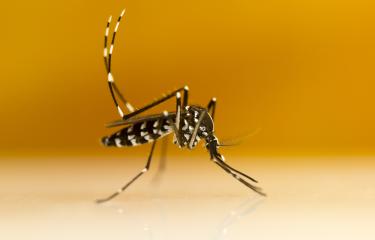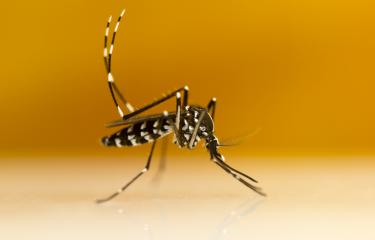A study, the most comprehensive assessment of vector competence, shows that Aedes aegypti mosquitoes from the Asia-Pacific region are capable of transmitting yellow fever virus. This indicates that vector populations are seemingly not a brake to the emergence of yellow fever in the region.
Viral pathogens with high epidemic potential have been historically a major concern for human health. Large-scale epidemics like the 1918 influenza pandemic have left their marks, and the fear of new viral emergences has materialized today with the SARS-CoV-2 pandemic. Over the past decades, the world had to face new emergences of arboviruses, chikungunya in 2005-2006, Zika in 2013, affecting all continents and causing millions cases. Since vaccines are usually unavailable and most drugs are inefficient to treat arbovirus infections, disease control relies mainly on the fight against the mosquito vectors. Thus the specific knowledge of vector competence, informs on the potential role of a mosquito species in transmitting an arbovirus, helping then in assessing the risk of transmission and outbreaks.
One of the main mystery in infectious diseases is the absence of yellow fever (YF) in Asia, this virus being historically endemic to Sub-Saharan Africa and South America. Yellow fever virus (YFV) is mainly transmitted by the human-biting Aedes mosquitoes, whose distribution encompasses a large belt of tropical and sub-tropical regions. Since 1937, YF can be prevented through immunization provided by the 17D vaccine. However, we still have 200,000 cases and 20-30,000 deaths each year, 90% being in Africa. Movements of non-vaccinated people exposed to YF in endemic areas, are often the causes of outbreaks.
On 21 January 2016, an outbreak of YF occurred in Angola with more than 3,000 cases and hundreds of deaths. YFV expanded to neighboring countries and imported cases were also reported in China. The increasing commercial exchanges between Africa and Asia increasing the risk of importing YFV-infected travelers in regions where the historical YF vector Aedes aegypti is omnipresent, may threaten Asian countries with a new viral emergence.
“In our study, we used experimental infections of field-collected mosquitoes to show that Aedes mosquitoes from the Asian Pacific region are competent vectors for yellow fever virus”, explains Anna-Bella Failloux, Head of Arboviruses and Insect Vectors at the Institut Pasteur (Paris). “We observe that Aedes aegypti populations from Singapore, Taiwan, Thailand, and New Caledonia are capable of transmitting YFV 14 days after oral infections, with a number of viral particles excreted from saliva reaching up to 23,000 viral particles,” says Pei-Shi Yen, researcher in the Unit.
These findings represent the most comprehensive assessment of vector competence and show that Ae. aegypti mosquitoes from the Asia-Pacific region are capable of transmitting YFV, indicating that vector populations are seemingly not a brake to the emergence of YF in the region.
Source
Risk of yellow fever virus transmission in the Asia-Pacific region. Nature Communications 11, 5801 (2020). November 16, 2020. https://doi.org/10.1038/s41467-020-19625-9
Lucy de Guilhem de Lataillade,1 Marie Vazeille,1 Thomas Obadia,2,3 Yoann Madec,4 Laurence Mousson,1 Basile Kamgang,5 Chun-Hong Chen,6 Anna-Bella Failloux,1, Pei-Shi Yen1,
1 Arboviruses and Insect Vectors Unit, Institut Pasteur, Paris, France
2 Bioinformatics and Biostatistics Hub, Institut Pasteur, USR 3756, CNRS, Paris, France
3 Malaria Unit: Parasites and Hosts, Institut Pasteur, Paris, France
4 Emerging Diseases Epidemiology Unit, Institut Pasteur, Paris, France
5 Centre for Research in Infectious Diseases, Department of Medical Entomology, Yaoundé, Cameroon
6 National Health Research Institutes, Institute of Infectious Diseases and Vaccinology, Miaoli, Taiwan
This study is part of the priority scientific area Emerging infectious diseases of the Institut Pasteur's strategic plan for 2019-2023.






